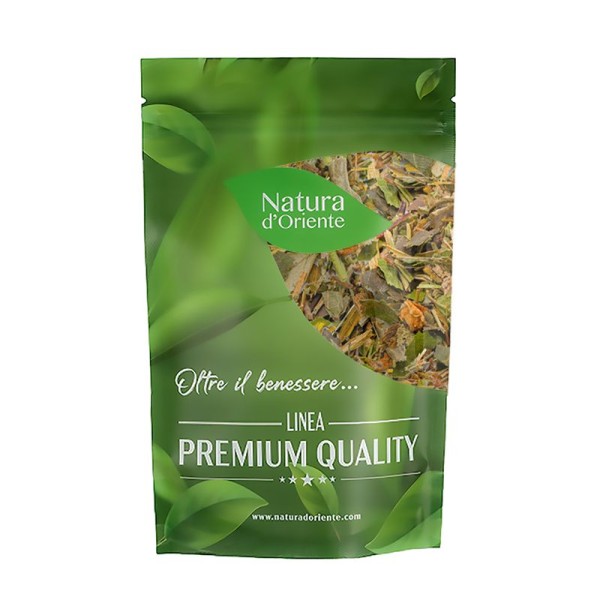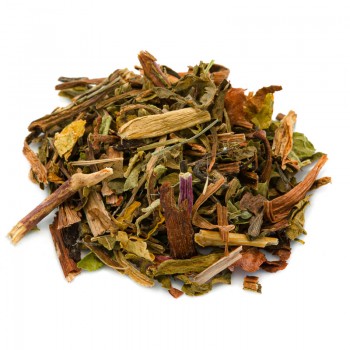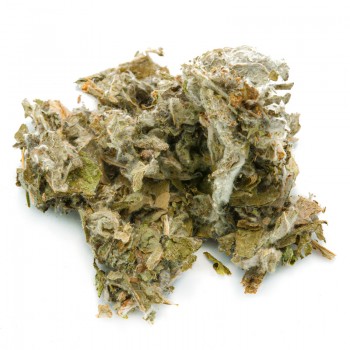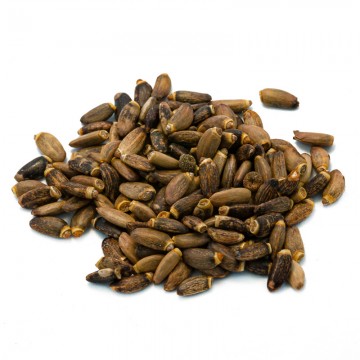Our Agrimonia Composta is a blend of carefully selected herbs, designed for the preparation of herbal teas with a soft and pleasant taste. Agrimony, a plant historically appreciated in infusions, is combined with other species for a harmonious taste experience, rich in natural scents. Perfect for a moment of daily pause and well-being, this composition stands out for the quality of the raw materials and respect for ancient traditions.
A blend that blends the tastes and aromas of medicinal herbs in a complex way, including vegetal, balsamic and slightly bitter notes. The result is a herbal tea with a lively taste and a natural balance between depth and freshness, like on a journey through wild herbs and Mediterranean shrubs. The heart of the infusion is given by agrimony and barberry, which combine herbaceous and bitter flavors of the earth, enhanced by blueberry leaves, dandelion and couch grass. They are balanced by the soft ones of verbena, the floral tips of hawthorn and the fresh scents of mint and the herbaceous and delicate ones of combretum.
The ideal herbal tea to experience the tradition of medicinal plants, to be enjoyed both hot and cold for a moment of relaxation and natural well-being.
Plant and flowers
The components of the herbal tea are various, known since ancient times for herbal use. They can also come from different areas of the world, but for the most part they have been known in Europe for centuries.
Agrimony is a perennial herbaceous plant of the Rosaceae family. It has a small rhizome, from which the stem is born, whitish and green leaves, yellow flowers. It is widespread throughout Europe, in North America and in south-east Asia. Dandelion (Taraxacum officinale), belongs to the Asteraceae family. Also known as dandelion or blowball, it is a perennial plant that grows spontaneously in many soils and climates. Combretum is a plant that belongs to the Combretaceae family, and includes almost 300 species of trees and bushes. Also called kinkéliba, it is native mostly to tropical areas of Africa, Asia and America.
The blueberry (Vaccinium myrtillus) is a spontaneous plant in Europe, part of the Ericaceae family. Famous for its berries, the part of the leaves is also used in phytotherapy. In Italy it is found in the Alps and in the central-northern Apennines.
The hawthorn (Crataegus monogyna), is a flowering plant of the Rosaceae family. Its origin is varied, having been present for centuries in Europe, north-west Africa and western Asia. It displays white flowers and thorny branches, from which it takes its name, and red fruits.
Mint (Mentha) is a perennial herb of the Lamiaceae family. Known for its aroma, it has a woody rhizome, oval and serrated leaves. The many species of mint have similar medicinal properties, thanks to the presence of menthol.
Verbena, anciently called Herba sacra or Herba veneris, is a perennial herb of the Verbenaceae family. It has a fibrous root and small purple flowers. In herbal medicine, the dried flowering plant is used.
Rosemary (Salvia rosmarinus) is a shrub belonging to the Lamiaceae family. It is known for the use of the leaves in cooking. Already known to the Latins, who named it with the terms ros (dew) and maris (of the sea). Barberry (Berberis vulgaris) is a plant belonging to the Berberidaceae family. It is very widespread in the mountainous areas of Europe and the Caucasus. It has a shrub that can reach 3 meters in height, yellow roots, thorny branches, yellow flowers.
Cougar grass (Agropyrum repens) is a plant famous for being a spontaneous plant that resembles wheat, it is part of the Graminaceae family. It has a rough stem, leaves covered with hair, and the dried rhizome is used in herbal medicine. The olive tree (Olea europaea), is a plant native to the Mediterranean coasts, of the Oleaceae family. It is the only species whose fruits are used. The wood of other Olea species is used. The green and gray leaves are evergreen and the inflorescences are white or greenish.
How to use the herbal blend in herbal tea
The infusion is obtained by pouring about 3-5 grams of the Agrimonia herbal tea compound, in a 250 ml cup, with water at 100 °C.
Leave to infuse for 8 to 10 minutes, before filtering and drinking. You can add honey or sugar, according to your preferences.
Herbal blend: side effects and contraindications
Although the herbs and vegetables that make up the blend are considered safe, it is essential to respect the recommended doses. Excessive consumption could cause unwanted effects. It is recommended to evaluate hypersensitivity, allergies or intolerances to the individual ingredients. Use is not recommended during pregnancy and breastfeeding.











 No reward points for this product.
No reward points for this product.





